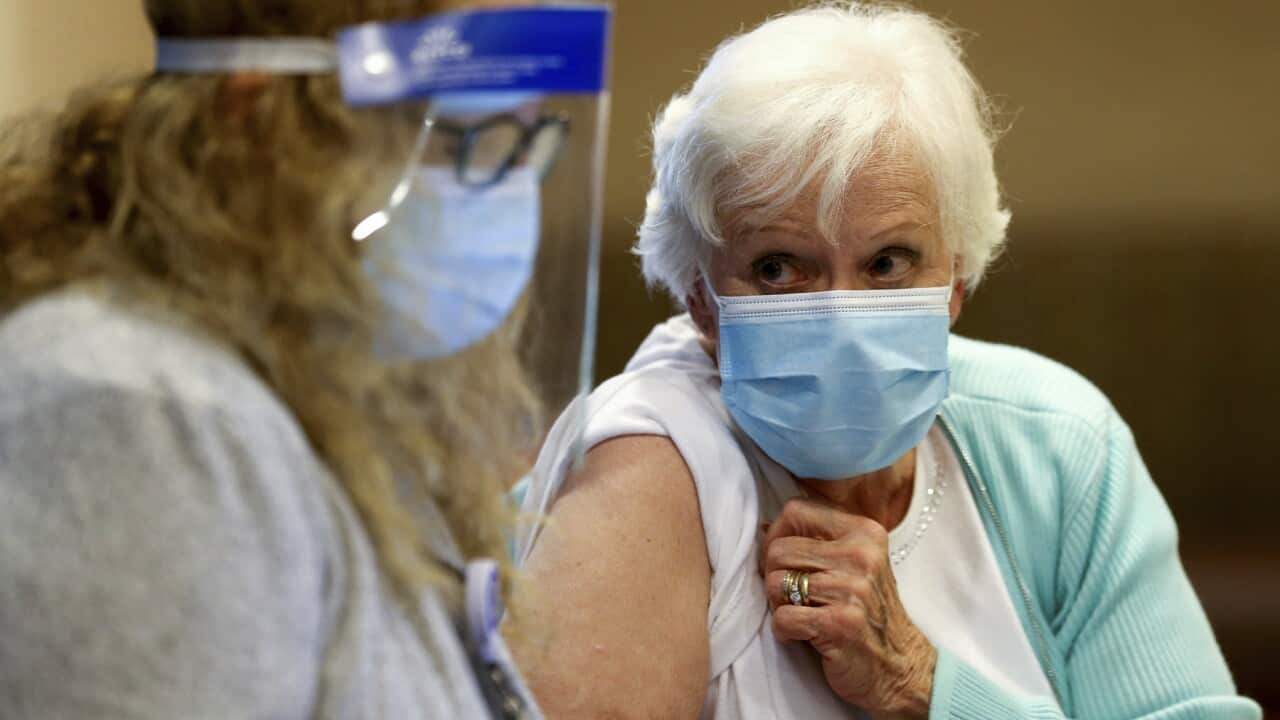When the coronavirus pandemic hit Australia last year, tens of thousands of students were forced to learn from home for the first time ever.
Dozens of Australian schools were also closed for deep cleaning after exposure to the virus.
That’s left some teachers feeling uneasy about returning to the classroom for a new school year, which began this week for a handful of states.
Here's a look at Australia's plan for vaccinating teachers and children, as well what's being done to keep them safe on-site.
Where are teachers in the vaccine queue?
Teachers are not specifically mentioned in , meaning they will only be able to get the jab when their age group or medical history permits.
However, teachers unions are lobbying the federal government to rethink the rollout, saying vaccinating teachers early on is one of the most important things Australia can do to keep schools open this year.
“It only takes one student or one staff member to close a school down, and we don't want to see that in 2021,” Independent Education Union secretary Mark Northam said.
“We believe that our members in schools should be included in either phase 1 or phase 2 of the rollout.”
Mr Northam said while teachers had done an incredible job adapting to the pandemic in 2020 it has not been easy, and some are concerned about returning to work.
“They've really done the work of magicians in schools,” he said.
Different nations across the world are taking different approaches to teacher vaccination.
Russia gave teachers access to its Sputnik V vaccine as part of the first priority group, for example, and the United States' Centers for Disease Control and Prevention has recommended that states prioritise teachers during their second phase of rollouts.
There are also calls in other nations for teaching staff to be given greater vaccination priority, with a parliamentary petition in Britain having garnered around half a million signatures.

Bags are seen at Annandale Public School in Sydney. Source: AAP
Why haven't teachers been given higher priority?
Australian Medical Association vice president Chris Moy said while teachers definitely fill an essential role in society, it is not particularly high-risk for contracting COVID-19.
“Urgency is there, but urgency is relative to others,” he said.
“Their risk is going to still be, because Australia has done so well, relatively low, and certainly much less, for example, than frontline workers in hotel quarantine and emergency department staff."
A Department of Health spokesperson said Australia’s vaccine rollout strategy was prioritised around three groups: "those at increased risk of exposure, those who have an increased risk, relative to others, of developing severe disease or outcomes from COVID-19, and those working in services critical to societal functioning".
"Any application for critical service designation would be a matter for the medical expert panel," they said.

Secondary school students arrive at Elevation Secondary College in Craigieburn, Melbourne, last October. Source: AAP
When will children under 16 get vaccinated?
Australia's current COVID-19 vaccination program covers those aged 16 and over.
The government says children under 16 will only be immunised if medical advice later suggests it’s warranted. Until then, they won't be getting the jab.
Kristine Macartney, an infectious disease paediatrician and the director of the National Centre for Immunisation Research and Surveillance, said it's unlikely younger children in Australia will get a coronavirus vaccine in the near future.
“Although a number of COVID-19 vaccines are licenced in other countries, there are no vaccines registered for anyone younger than 16. This is because clinical trials have not been conducted in children," she said.
“So, it will be some time, probably not even in 2021, before we see COVID-19 vaccines registered for use in children, and that’s really a reflection of where the protection needs to be at this early stage of controlling the pandemic.”
How will classrooms be kept COVID-safe?
While there will be subtle differences across the states and territories, the Australian Health Protection Principal Committee has issued a set of nationwide guidelines for schools to follow.
These include breaking off into smaller classes, rearranging classroom furniture to maximise distancing and, where possible, staggering lunch breaks to minimise mixing between different year levels.
Professor Macartney said it will be important to keep these in-school distancing measures up, even if case numbers stay close to zero.
“There are so many measures that work together, and I think it's only going to be a tweak to these - if at all - in 2021,” she said.
“This, of course, includes the way that children might congregate together, what types of activities they do, good hygiene and environmental cleaning in the classroom, being sure that testing rates are high and that teachers and children don't’ come to school if they’re at all unwell.”
Additional reporting by Amelia Dunn.
People in Australia must stay at least 1.5 metres away from others.
Check your jurisdiction's restrictions on gathering limits. If you are experiencing cold or flu symptoms, stay home and arrange a test by calling your doctor or contact the Coronavirus Health Information Hotline on 1800 020 080.
Please check the relevant guidelines for your state or territory: , , , , , , ,



